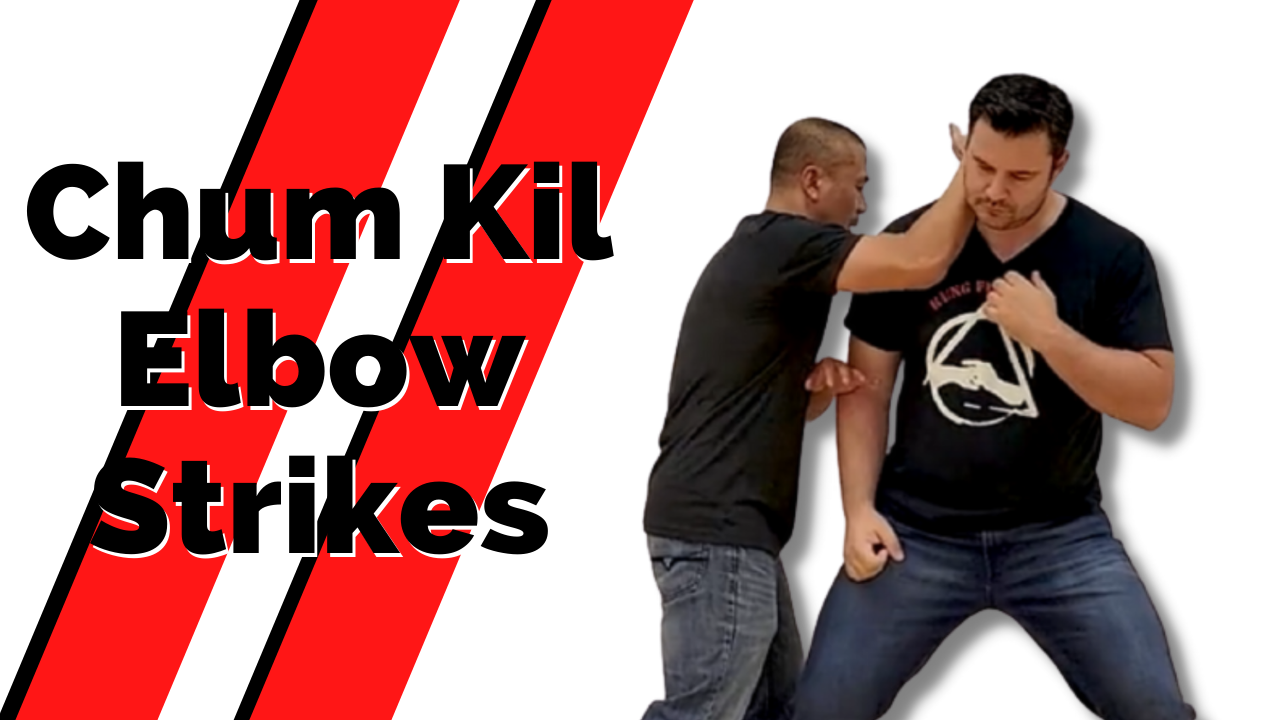Chum Kil Elbow Strikes

- From a Wing Chun perspective, elbows are only used when given, which means if we can punch or palm strike with arm extension, then we would not use our elbows. We only use the elbow because the distance is too close to punch. As in all things we use the most direct way.
- The double Lan Sau shifting elbows is a concept, not a literal technique. This means we are training both arms at the same time, but we do not use both arm's elbows at the same time in an application. Also, we are practicing BOTH, the backhand and the forehand motion of the elbow strikes on the horizontal plane at the same time. However, in concept, all angles of motion, vertical, diagonal, horizontal can be used in an application.
- In the form, the elbow strike's power is generated by the shift stance, using one's legs, hips and waist to power the movement. This is a great way to get good power. However, the form also encourages a very relaxed shoulder and forearm muscles when delivering the double Lan Sau elbow strikes. This is often overlooked but very very important. The reason is, if the shoulder, chest, and forearm muscles are turned off, then eventually, we can deliver great power without even need to turn much or brace into a stance! This is a major advantage because in combat sometimes, we simply do not have the time to use a bigger movement!
- Another element in the Chum Kil Elbows is how it is always done at the chest level in the form. This is a commonly forgotten element. The reason why Wing Chun advocates elbows in the chest level and not the head (unless absolutely necessary) is because when you elbow the head and you miss, you end up turning your back on the enemy. This is very risky.
Lastly, the above brief description of some of the elements in training the elbows in the Chum Kil form illustrates the idea that the form should not be taken literally - they
are representations of concepts. Because it is not literally, very often people are missing knowledge in making the movements work in the application.
If you are interested in learning the meaning of the Chum Kil form, check out my Wing Chun Level 2 course, a Wing Chun online training focused on potentialize and develop advanced skills.
Stay connected with news and updates and and the latest Kung Fu Report episode !
Join our mailing list to receive the latest news and updates from our team.
Don't worry, your information will not be shared.

